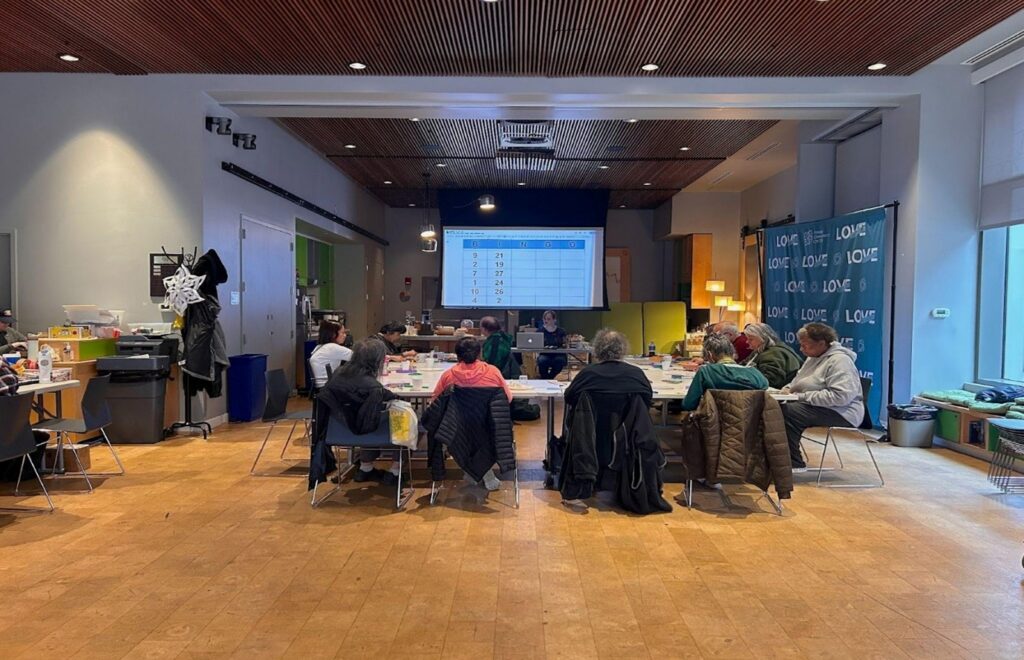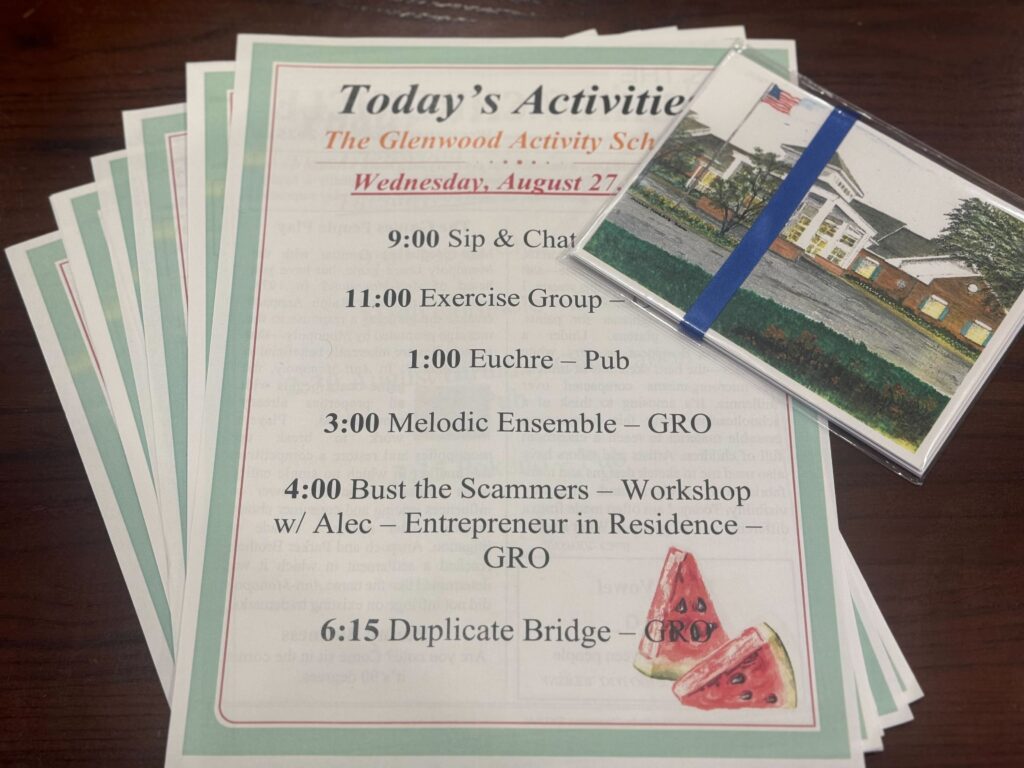Abstract
The global aging population presents profound social, economic, and healthcare challenges, necessitating innovative approaches to extend healthspan—the period of life spent in good health. This article explores the transformative role of artificial intelligence (AI) in aging research and healthcare, emphasizing personalized, data-driven strategies to address aging’s root causes. By integrating AI in regenerative medicine, functional medicine, and lifestyle interventions, we can optimize health outcomes for elders. AI-powered domain-specific tools like FunctionalMind or wider, open AI models such as Claude or Perplexity can streamline clinical decision-making, enabling precise, patient-centered care. Challenges such as data privacy, bias, and ethical considerations must be addressed to ensure AI’s safe and equitable application in revolutionizing aging care.
Key Words
aging, healthspan, artificial intelligence, functional medicine, regenerative medicine, personalized care, chronic disease, AI ethics
Aging is a complex biological process marked by the gradual decline of cellular function, driven by genetic, metabolic, and environmental factors. Over time, our cells accumulate damage, leading to systemic dysfunction, increased disease susceptibility, and a higher risk of mortality (McHugh & Gil, 2018). The effects of aging extend beyond physical decline, affecting cognitive performance, emotional well-being, and overall quality of life.
A paper in the journal Cell has recently defined 12 hallmarks of aging: genomic instability, telomere attrition, epigenetic alterations, loss of proteostasis, disabled macroautophagy, deregulated nutrient-sensing, mitochondrial dysfunction, cellular senescence, stem cell exhaustion, altered intercellular communication, chronic inflammation, and dysbiosis (López-Otín et al., 2023).
The biologically interconnected nature of these aging hallmarks means that enhancing or suppressing one hallmark often influences others, highlighting aging as a highly complex, interdependent process. Therefore, aging must be understood as a whole, rather than as isolated mechanisms. Each hallmark also serves as a potential entry point for further research into the aging process and the development of innovative anti-aging therapies. Operating across all domains, or understanding which to focus on, is challenging for clinical decision-makers. Mechanisms interact, creating complex webs of interaction and varied outcomes. The shift from pursuing single unified theories of aging toward explaining aging as a complex combination of molecular events and cellular responses has been instrumental in the development of a range of novel interventions and treatments targeting age-related changes in function.
Rate and Cost of Aging: A Comprehensive Analysis
The global population is aging at an unprecedented rate, a demographic shift that presents profound social, economic, and healthcare challenges. By 2050, it is estimated that nearly 1 in 6 people worldwide will be older than age 65, up from 1 in 11 in 2019 (World Health Organization, 2024). This rapid aging is driven by declining birth rates and increasing life expectancy, which, while a testament to medical and technological advancements, also bring significant societal burdens. A recent economic analysis highlighted the staggering implications of this trend, estimating that slowing the aging process by just 1 year could generate economic benefits worth $38 trillion in the United States alone (Scott et al., 2021). However, the real focus should not be solely on extending lifespan—the total number of years lived—but on improving healthspan, the number of years lived in good health, free from debilitating diseases and disabilities.
The economic costs of an aging population are multifaceted. As people age, they are more likely to develop chronic conditions which not only reduce quality of life but also place immense pressure on healthcare systems, social services, and economies. For instance, the cost of caring for individuals with Alzheimer’s and other dementias is projected by 2050 to exceed $1 trillion annually in the United States (Nandi et al., 2024).
Beyond direct healthcare expenses, older populations also face challenges related to workforce productivity, pension systems, and intergenerational equity. Care providers also are aging, and the effect is a shortfall in clinicians in the United States, estimated to approach 130,000 by 2030 (Jones & Dolsten, 2024). Even today the shortage has impacts: According to public opinion research conducted in 2019 by Public Opinion Strategies for the Association of American Medical Colleges, 35% of voters had trouble finding a doctor in the past 2 or 3 years. That’s 10 points higher than when the question was asked in 2015 and likely worse since COVID-19 (Redford, 2020).
Moreover, the social costs of aging are equally significant. Older adults often experience social isolation, reduced mobility, and diminished independence, which can lead to mental health issues such as depression and anxiety. Families and caregivers bear a heavy emotional and financial burden, further exacerbating the societal impact of aging.
The Promise of Healthspan Extension
While extending lifespan has been a long-standing goal of medical research, the emphasis is increasingly shifting toward improving healthspan. Healthspan is the period of life spent in good health, free from chronic diseases and disabilities. Extending healthspan not only enhances individual well-being but also reduces the medical, economic, and social costs associated with aging.
If individuals can remain healthy and productive for a longer portion of their lives, they can contribute to the economy, reduce healthcare expenditures, and maintain their independence. Because perfect health is neither sustainable nor attainable, a gap exists between these two measures. Currently, this gap is wider than ever: 9.2 years globally and 12.7 years in the United States, meaning many people spend their final years in pain, with limited mobility, and dependent upon medication (Garmany et al., 2021).
‘Extending healthspan not only enhances individual well-being but also reduces the medical, economic, and social costs associated with aging.’
The aging and increasingly common chronic conditions of the U.S. population have led to growing reliance on the use of prescription medications. Yet despite this increase, chronic diseases that diminish healthspan and accelerate aging have been increasing. The current model is not working.
Achieving extended healthspan requires a deeper understanding of the biological processes that underlie aging. The hallmarks discussed earlier present therapeutic opportunities to slow, halt, or even reverse the aging process. However, the complexity of aging necessitates innovative approaches to identify and optimize interventions.
The Role of AI in Aging Research and Healthcare
AI is poised to play a transformative role in aging research and healthcare. By leveraging machine learning algorithms, AI can analyze vast datasets spanning genetics, epigenetics, metabolomics, and phenotypic aging clocks to identify patterns and correlations that would be impossible for humans to discern. This capability enables the development of personalized interventions tailored to an individual’s unique biological makeup, optimizing their effectiveness, and personalizing medicines and supplements, while minimizing side effects (Levy et al., 2024).
One of the most promising applications of AI is in evaluating combination treatments. Aging is a multifactorial process, and targeting a single hallmark may not be sufficient to significantly extend healthspan. AI can predict or follow how therapeutic strategies interact, identifying the most effective combinations while reducing risks. For example, AI models can simulate the effects of combining senolytic drugs (which clear senescent cells) with epigenetic reprogramming therapies, providing insights into their synergistic potential.
AI can also track and analyze the impact of clinical N-of-1 events. N-of-1 research focuses on individualized treatment studies in which a single patient undergoes repeated interventions to determine their most effective personalized therapy. AI-powered models can track biological aging in real time, offering clinicians dynamic insights into treatment responses. By continuously monitoring biomarkers of aging, such as DNA methylation patterns or metabolic profiles, AI can guide adjustments to therapeutic regimens, ensuring that interventions remain effective as an individual’s biological age evolves (Dhar et al., 2022). This real-time feedback loop is critical and unattainable without AI for maximizing healthspan and lifespan.
This approach to interventional care, driven by the need for multipoint interventions, focuses on root-cause medicine rather than symptom suppression. It is widely recognized as integrative medicine, which, in recent years, has been most effectively articulated through the frameworks of functional medicine.
Functional medicine is a patient-centered healthcare approach. It represents a shift from the traditional disease-centered model to a holistic, systems-based approach that considers the whole person—integrating genetic, environmental, and lifestyle factors. By understanding how these elements interact over a lifetime, functional medicine aims to optimize health and prevent and reverse chronic diseases through personalized interventions, such as tailored nutrition, medicine, and lifestyle changes.
Core principles of functional medicine include a deep understanding of biochemistry, a therapeutic partnership between patient and clinician, and the use of tools like the Functional Medicine Matrix to map underlying cellular-level dysfunctions (The Institute for Functional Medicine, 2024). Practitioners spend significant time listening to patients, analyzing their histories, and identifying how diet, medicine, lifestyle, and environmental factors impact health.
Unlike conventional medicine, which often treats symptoms in isolation, functional medicine emphasizes the prevention and reversal of declining health and addresses the complex interplay between bodily systems. It has practical applications in managing chronic conditions and in aging by developing personalized plans that target root causes and respect the needs and capabilities of each patient.
However, the nature of functional, integrative and longevity medicine—holding multiple systems in the arc of possibility, analyzing numerous lab results, interpreting clinical findings, addressing patient needs, and staying current with research—makes delivering effective care time-consuming and challenging. Fortunately, AI is beginning to address these complexities.
Enter FunctionalMind, a pioneering medical chatbot designed to streamline the process. By combining accurate, trusted medical knowledge managed by the state-of-the-art medical language models from John Snow Labs, with access to up-to-date research and clinical expertise, fine-tuned specialized data sets, and extensive clinical case experience, FunctionalMind quickly assists clinicians operating in this field in translating clinical presentations into actionable, patient-led therapeutic interventions. Other medical research and clinical insight models include OpenEvidence, Glass Health, and Pathway; other open access models include Longevity AI and Cera.
Large language models (LLMs), such as FunctionalMind’s operating systems for healthcare, have the capability to process extensive databases of medical literature and patient data, learn from historical cases, and provide valuable insights that help with accurate and timely diagnosis and treatment decision support. But they also need careful management.
LLM Challenges
LLMs in healthcare face several challenges and limitations. Key concerns include data privacy and security, particularly under regulations like the Health Insurance Portability and Accountability Act and General Data Protection Regulation, and the risk of biases or inaccuracies in medical advice due to flawed training data. LLMs also may lack the contextual understanding needed for nuanced patient care and may struggle with specialization for rare conditions. Additionally, integrating LLMs into healthcare systems and ensuring they stay updated with evolving medical knowledge are resource-intensive tasks.
Functional medicine is a patient-centered, holistic, systems-based approach that considers the whole person—integrating genetic, environmental,
and lifestyle factors.
Ethical and regulatory hurdles further complicate their use, as does the risk of overreliance by healthcare professionals, which could undermine clinical judgment. While LLMs offer significant potential, addressing and managing these challenges is crucial to ensure their safe, effective, and ethical application in healthcare.
As AI technology continues to advance, so, too, will the capabilities of clinicians using such systems. Artificial intelligence–enabled systems supporting clinical and healthcare research not only enhance efficiency but also empower practitioners to focus more on personalized patient care, bridging the gap between complex data analysis and practical, actionable insights. This innovation represents a significant step forward in making functional, integrative, and longevity medicine more accessible and effective for both clinicians and patient. Humanizing AI remains core to clinical utility as it empowers clinicians to seamlessly integrate data-driven insights with their deep understanding of individual patient needs. This fusion creates healthcare practices that are scientifically rigorous and profoundly personal.
Revolutionizing Aging Research with Data-Driven Precision
The integration of AI into aging research marks a progressive and transformative shift from generalized anti-aging treatments to personalized, proactive strategies. Geriatric medicine is increasingly embracing the potential of regenerative medicine as a transformative approach to aging and age-related conditions. Regenerative medicine focuses on repairing, replacing, or regenerating damaged tissues and organs, offering promising solutions for chronic diseases, degenerative disorders, and functional decline commonly seen in older adults. Techniques such as stem cell therapy, tissue engineering, and gene editing hold the potential to restore cellular function, enhance tissue repair, and slow the progression of aging-related damage (Rando & Jones, 2021). While advanced therapeutics are available, meaningful improvements in healthspan also can be achieved through simpler, low-cost lifestyle changes (Amiri et al., 2024).
For geriatric patients, this could mean improved mobility, cognitive function, and overall quality of life. By addressing the root causes of aging at a cellular level, regenerative and integrative medicine complements traditional geriatric care, shifting the focus from managing symptoms to restoring health and vitality. Traditional methods often rely upon one-size-fits-all interventions, failing to address the unique ways individuals age. In contrast, AI-driven precision medicine considers the interplay of genetic, environmental, and lifestyle factors, enabling the development of tailored interventions that maximize clinical benefits.
For instance, advanced lab tests combined with AI can identify individuals at higher risk of age-related diseases based on their genetic makeup and lifestyle habits. Early risk prediction allows clinicians to implement preventive measures, such as customized dietary plans, exercise regimens, or targeted therapies like medications, supplements, senolytics, and other specialized treatments. This proactive approach not only enhances health outcomes but also alleviates strain on healthcare systems, paving the way for a future where aging is managed with precision and care. The attractive feature of AI is its ability to identify relevant patterns within complex, nonlinear data, without the need for any a priori mechanistic understanding of the biological processes (Lyu et al., 2024).
Lifestyle Interventions, Supplements, and Drugs for Healthy Aging
In the dynamic field of healthy aging, clinical interventions such as exercise, diet, and pharmaceuticals play a critical role. Emerging evidence highlights that exercise is more than just a tool for physical fitness; it acts as a biological modifier. For instance, exercise increases levels of circulating Interleukin-6, a cytokine that helps regulate inflammation, glucose homeostasis, and lipid metabolism. This demonstrates that exercise not only enhances physical health but also serves as a biochemical intervention capable of mitigating the effects of aging (Cerqueira et al., 2020).
Dietary strategies, such as calorie restriction, intermittent fasting, and fasting-mimicking diets, when applied carefully, also have shown significant health benefits. Clinically, these approaches have improved outcomes for patients with chronic conditions like diabetes and hypertension, underscoring their potential in promoting longevity and vitality (Spadaro et al., 2022).
‘AI-driven meal planning can tailor diets to an individual’s gut microbiome, metabolic health, and
anti-inflammatory needs.’
Pharmaceutical interventions further expand the possibilities for healthy aging. Natural compounds like NAD+ precursors, alpha-ketobutyrate, NT Factor (Nicolson et al., 2021), and urolithin-A have been shown to enhance mitochondrial function and morphology, while repurposed drugs such as rapamycin and other mTOR inhibitors, along with compounds like spermidine, boost autophagy, immune function, and vaccine responses. These findings suggest their potential to counteract age-related immune decline (Neilsen et al., 2022). Additionally, combinations like dasatinib and quercetin have been shown to reduce senescence markers and improve immune function in older adults, highlighting the promise of pharmacological agents in extending healthspan (Alsaleh et al., 2020; Islam et al., 2023).
Together, these lifestyle, dietary, and pharmaceutical interventions offer a multifaceted approach to healthy aging, addressing the biological, metabolic, and immune challenges associated with growing older (Chaib et al., 2022).
Transforming Integrative Healthcare for an Aging Population
To fully realize the potential of AI-driven aging interventions, healthcare systems must evolve. Traditional medical models are inadequate for addressing the complex, multifactorial nature of aging. Older adults require integrative, data-driven approaches that consider the full spectrum of their health, from physical and cognitive function to emotional well-being.
Outside of the one-to-one clinical experience, AI-powered healthcare solutions offer a revolutionary means of personalizing medical care for older adults. For instance, wearable devices equipped with AI algorithms can continuously monitor vital signs, detect early signs of disease, and alert healthcare providers to potential issues before they become critical. Virtual health assistants powered by AI can provide older adults with personalized recommendations for maintaining their health, from medication reminders to exercise routines.
Moreover, AI can enhance cognitive health by identifying early markers of neurodegenerative diseases and enabling timely interventions. AI models can analyze speech patterns, gait, and other behavioral data to detect subtle changes that may indicate the onset of conditions like Alzheimer’s disease. Early detection allows for the implementation of therapies that can slow disease progression and preserve cognitive function.
Patient Profile: Why AI-Driven Integrative Healthcare Matters
Aging increases the complexity of our health needs. Multiple chronic conditions that affect physical, cognitive, and emotional well-being start to grow exponentially. Healthcare models, built on standardized protocols and clinical guidelines, designed for single disease care, frequently fall short in addressing the nuanced needs of this population. What older patients require is customized care that considers the intricate interplay of factors unique to their stage of life. These include but are not limited to:
- Polypharmacy risks: The potential for harmful interactions between multiple medications and supplements.
- Metabolic and gut microbiome changes: Shifts that influence nutrient absorption, inflammation, and overall health.
- Lifestyle factors: Stress levels, physical activity, diet, and other elements that shape long-term health outcomes.
This is where AI-driven healthcare solutions step in, bridging the gap between conventional medicine and integrative functional approaches. By leveraging vast datasets, ranging from genetic profiles and metabolic markers to lifestyle habits and environmental influences, AI enables the creation of highly individualized care strategies. These strategies are designed not just to treat symptoms but to optimize aging outcomes, ensuring that older adults can live healthier, more vibrant lives.
Potential AI-Powered Treatment Approaches
- Personalized Nutrition & Dietary Modifications
AI-driven meal planning can tailor diets to an individual’s gut microbiome, metabolic health, and anti-inflammatory needs. This ensures that every bite supports their unique biological requirements. - Targeted Supplementation, Botanicals and Medicines
AI-optimized nutrient and drug algorithms can identify precise supplementation and drug needs, avoiding unnecessary interventions while maximizing efficacy. - Cognitive Health & Brain Optimization
AI-powered tools, such as neurofeedback and brain-training exercises, can enhance cognitive longevity. Stress-reduction techniques, guided by AI insights, further support mental well-being. - AI-Powered Chatbots & Virtual Health Assistants
Clinician-focused tools like FunctionalMind, and others listed previously, provide real-time AI-driven health insights, helping clinicians manage interventional strategies, monitor symptoms, and make lifestyle adjustments with ease.
Key Takeaways: AI as the Future of Aging Care
- Revolutionizing Healthcare: AI is rapidly transforming aging care by enabling data-driven, personalized interventions that prioritize healthspan over lifespan.
- Integrative Medicine + AI: The combination of integrative medicine and AI analytics offers a powerful personalized approach to detecting, preventing, and treating age-related diseases.
- Empowering Patients and Clinicians: AI-powered chatbots, predictive diagnostics, and wearable health tracking will equip clinicians and older adults with tools to make smarter, more informed health decisions.
- The Future of Aging: AI’s ability to synthesize complex biological, environmental, and lifestyle factors into actionable, personalized care plans is paving the way for a new era of aging—one defined by vitality, independence, and well-being.
By embracing AI as the engine of integrative healthcare, we are not just adding years to life—we are adding life to years. This is the promise of AI-driven aging care: a future where growing older is synonymous with thriving, not just surviving.
Ethical and Societal Considerations
While the potential of AI in aging research and healthcare is immense, it also raises important ethical and societal questions. Issues such as data privacy, algorithmic bias, and equitable access to AI-driven interventions must be addressed to ensure that these technologies benefit all segments of the population. Policymakers, researchers, AI companies, and healthcare providers must work together to establish guidelines and frameworks that promote the responsible use of AI in aging-related applications. LLMs involved in healthcare need domain specific data bases, a strong internal and external ethical and bias mitigation strategy, and the ability to evolve and meet the needs of the clinicians and patients where they are.
Too often, the complexities of AI overshadow its practical utility in clinical settings. While advancements in data analysis continue to enhance healthcare, it is crucial to remember that human interaction remains the cornerstone of all care delivery, including interventions aimed at mitigating the adverse effects of age-related changes. Balancing technological innovation with the irreplaceable value of human connection ensures that care remains compassionate, personalized, and effective.
Conclusion
The aging of the global population presents significant challenges, but also offers opportunities for innovation and transformation. By shifting the focus from lifespan to healthspan and leveraging the power of AI, we can develop personalized, data-driven strategies to improve the quality of life for older adults.
Michael Ash, DO, ND, BSc (Hons), RNT, is a UK-trained osteopath, naturopath, and nutritionist, as well as director and co-founder of FunctionalMind in Southwest England.
Photo credit: Shutterstock/Color4260
References
Alsaleh, G., Panse, I., Swadling, L., Zhang, H., Richter, F. C., Meyer, A., Lord, J., Barnes, E., Klenerman, P., Green, C., & Simon, A. K. (2020). Autophagy in T cells from aged donors is maintained by spermidine and correlates with function and vaccine responses. eLife, 9, e57950. doi:10.7554/eLife.57950
Amiri, S., Mahmood, N., Junaidi, S., & Ab Khan, M. (2024). Lifestyle interventions improving health-related quality of life: A systematic review and meta-analysis of randomized control trials. Journal of Education and Health Promotion 5(13), 193. doi:10.4103/jehp.jehp_1156_23.
Cerqueira, É., Marinho, D. A., Neiva, H. P., & Lourenço, O. (2020). Inflammatory effects of high and moderate intensity exercise—A systematic review. Frontiers in Physiology, 10, 1550. doi:10.3389/fphys.2019.01550
Chaib, S., Tchkonia, T., & Kirkland, J. L. (2022). Cellular senescence and senolytics: The path to the clinic. Nature Medicine, 28(8), 1556–1568. doi:10.1038/s41591-022-01923-y
Dhar, P., Moodithaya, S. S., & Patil, P. (2022). Epigenetic alterations-The silent indicator for early aging and age-associated health-risks. Aging Medicine (Milton), 5(4), 287–293. doi:10.1002/agm2.12236
Garmany, A., Yamada, S. & Terzic, A. (2021). Longevity leap: Mind the healthspan gap. NPJ Regenerative Medicine, 6, 57. doi:10.1038/s41536-021-00169
The Institute for Functional Medicine. (2024). Functional Medicine Matrix: Organizing clinical imbalances. https://www.ifm.org/articles/toolkit-functional-medicine-matrix
Islam, M. T., Tuday, E., Allen, S., Kim, J., Trott, D. W., Holland, W. L., Donato, A. J., & Lesniewski, L. A. (2023). Senolytic drugs, dasatinib and quercetin, attenuate adipose tissue inflammation, and ameliorate metabolic function in old age. Aging Cell, 22(2), e13767. doi:10.1111/acel.13767
Jones, C. H. & Dolsten, M. (2024). Healthcare on the brink: navigating the challenges of an aging society in the United States. NPJ Aging 10(1), 22. doi:10.1038/s41514-024-00148-2
Levy, J. J., Diallo, A. B., Saldias Montivero, M. K., Gabbita, S., Salas, L. A., & Christensen, B. C. (2024). Insights to aging prediction with AI based epigenetic clocks. Epigenomics, 17(1), 49–57. doi:10.1080/17501911.2024.2432854
López-Otín, C., Blasco, M. A., Partridge, L., Serrano, M., & Kroemer, G. (2023). Hallmarks of aging: An expanding universe. Cell, 186(2), 243–278. doi:10.1016/j.cell.2022.11.001
Lyu, Y. X., Fu, Q., Wilczok, D., Ying, K., King, A., Antebi, A., Vojta, A., Stolzing, A., Moskalev, A., Georgievskaya, A., Maier, A. B., Olsen, A., Groth, A., Simon, A. K., Brunet, A., Jamil, A., Kulaga, A., Bhatti, A., Yaden, B., … Bakula, D. (2024). Longevity biotechnology: Bridging AI, biomarkers, geroscience and clinical applications for healthy longevity. Aging, 16(20), 12955–12976. doi:10.18632/aging.206135
McHugh, D., & Gil, J. (2018). Senescence and aging: Causes, consequences, and therapeutic avenues. Journal of Cell Biology 217(1), 65–77. doi:10.1083/jcb.201708092.
Nandi, A., Counts, N., Bröker, J., Malik, S., Chen, S., Han, R., Klusty, J., Seligman, B., Tortorice, D., Vigo, D., & Bloom, D. E. (2024). Cost of care for Alzheimer’s disease and related dementias in the United States: 2016 to 2060. NPJ Aging, 10, 13. doi:10.1038/s41514-024-00136-6
Nicolson, G. L., Ferreira de Mattos, G., Ash, M., Settineri, R., & Escribá, P. V. (2021). Fundamentals of membrane lipid replacement: A Natural medicine approach to repairing cellular membranes and reducing fatigue, pain, and other symptoms while restoring function in chronic illnesses and aging. Membranes (Basel), 11(12), 944. doi:10.3390/membranes11120944
Nielsen, J. L., Bakula, D., & Scheibye-Knudsen, M. (2022). Clinical trials targeting aging. Frontiers in Aging, 3, 820215. doi:10.3389/fragi.2022.820215
Rando, T. A., & Jones, D. L. (2021). Regeneration, rejuvenation, and replacement: Turning back the clock on tissue aging. Cold Spring Harbor Perspectives in Biology, 13(9), a040907. doi:10.1101/cshperspect.a040907
Redford, G. (2020). What makes a good doctor—and other findings from the 2019 AAMC Public Opinion Research. AAMC News. https://www.aamc.org/news/what-makes-good-doctor-and-other-findings-2019-aamc-public-opinion-research
Scott, A. J., Ellison, M., & Sinclair, D. A. (2021). The economic value of targeting aging. Nature Aging, 1(7), 616–623. doi:10.1038/s43587-021-00080-0
Spadaro, O., Youm, Y., Shchukina, I., et al. (2022). Caloric restriction in humans reveals immunometabolic regulators of health span. Science 375(6581), 671–677. doi:10.1126/science.abg7292.
World Health Organization. (2024). Ageing and health. https://www.who.int/news-room/fact-sheets/detail/ageing-and-health













